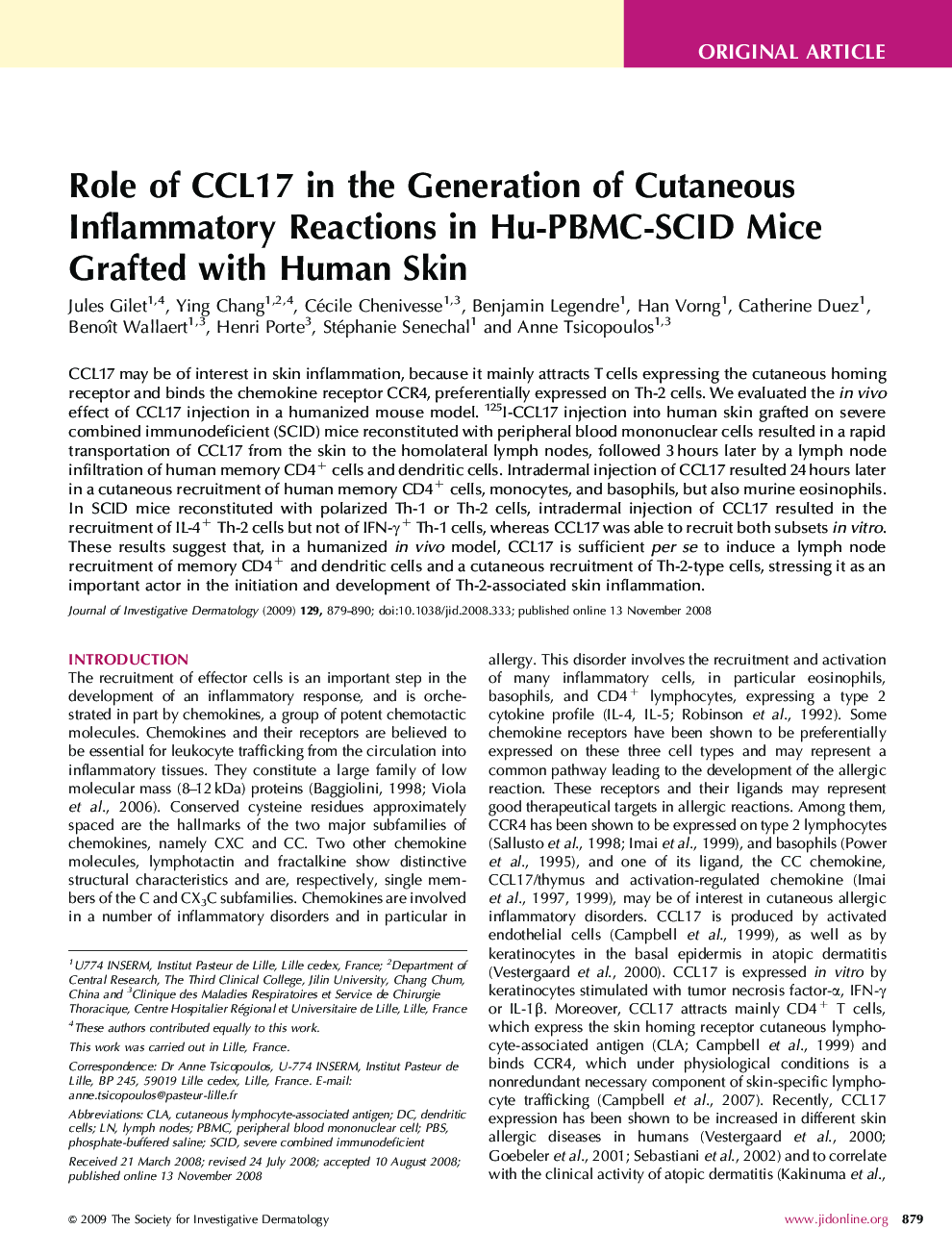| کد مقاله | کد نشریه | سال انتشار | مقاله انگلیسی | نسخه تمام متن |
|---|---|---|---|---|
| 3217775 | 1203612 | 2009 | 12 صفحه PDF | دانلود رایگان |

CCL17 may be of interest in skin inflammation, because it mainly attracts T cells expressing the cutaneous homing receptor and binds the chemokine receptor CCR4, preferentially expressed on Th-2 cells. We evaluated the in vivo effect of CCL17 injection in a humanized mouse model. 125I-CCL17 injection into human skin grafted on severe combined immunodeficient (SCID) mice reconstituted with peripheral blood mononuclear cells resulted in a rapid transportation of CCL17 from the skin to the homolateral lymph nodes, followed 3 hours later by a lymph node infiltration of human memory CD4+ cells and dendritic cells. Intradermal injection of CCL17 resulted 24 hours later in a cutaneous recruitment of human memory CD4+ cells, monocytes, and basophils, but also murine eosinophils. In SCID mice reconstituted with polarized Th-1 or Th-2 cells, intradermal injection of CCL17 resulted in the recruitment of IL-4+ Th-2 cells but not of IFN-γ+ Th-1 cells, whereas CCL17 was able to recruit both subsets in vitro. These results suggest that, in a humanized in vivo model, CCL17 is sufficient per se to induce a lymph node recruitment of memory CD4+ and dendritic cells and a cutaneous recruitment of Th-2-type cells, stressing it as an important actor in the initiation and development of Th-2-associated skin inflammation.
Journal: Journal of Investigative Dermatology - Volume 129, Issue 4, April 2009, Pages 879–890